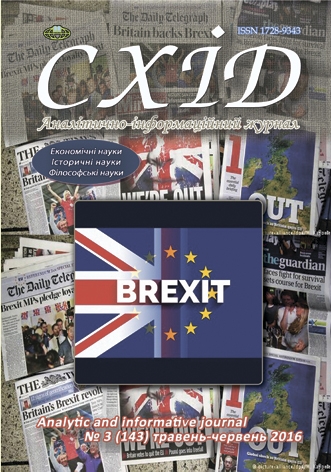The J. Fodor's language of thought hypothesis and epistemic logic
DOI:
https://doi.org/10.21847/1728-9343.2016.3(143).74853Keywords:
language of thought hypothesis, epistemic logic, modal logic, propositional attitudes, relationsAbstract
The study is to show the similarities between J. Fodor's Language of Thought hypothesis and epistemic modal logic. According to the J. Fodor's hypothesis there is the language of thought (also called "Mentalese") that is the meta-language in which mental representations of attitudes of organism to propositions expressed in object-language (for example: knowledge, belief, hope, desire, statement) are formulated. These attitudes are called "propositional attitudes". In the hypothesis propositional attitudes are thoughts and relations between organism and proposition. Propositional attitudes are of interest for epistemic modal logics. In epistemic logics propositional attitudes are relations considered as modalities, i.e. propositions with modal operators. On certain conditions J. Fodor's Language of Thought hypothesis may be considered as a sort of epistemic modal logic, only it would require certain updating as a formal logical system. The similarities between J. Fodor's Language of Thought and epistemic modal logics give two opportunities. First opportunity is to make special version of epistemic modal logic as an instrument of research for cognitive psychology based on J. Fodor's Language of Thought hypothesis. Second opportunity is to accept the idea of J. Fodor's Language of Thought as an innate language and to attain comprehension that epistemic modal logics are not especially constructed formal languages (formal systems) but innate cognitive programs. It might enable to extrapolate the idea of innate languages onto all formal languages including logical languages and to attempt verifying that idea experimentally within cognitive sciences.Downloads
References
Bezhanishvili, M. N. (2009). Epistemic Logic. Encyclopedia of Epistemology and Philosophy of Science.Moscow: Canon+ Rehabilitation, pp. 1155-1158.
Kostyuk, V. N. (2010). Epistemic Logic. New Philosophical Encyclopedia. Vol. 4. Moscow: Mysl, 2010, pp. 450-451.
Aydede M. (2010), The Language of Thought Hypothesis, Stanford Encyclopedia of Philosophy, available at: http://plato.stanford.edu/archives/fall2010/entries/language-thought/.
Braddon-Mitchell, D. & Fitzpatrick, J. (1990). Explanation and the Language of Thought. Synthese. № 1 (83), pp. 3-29. doi : 10.1007/978-94-011-3716-4_2.
Cook, R. T. (2009). A Dictionary of Philosophical Logic. Edinburgh:EdinburghUniversity Press.
Dennett, D. C. (1981). Cure for the Common Code, The Language and Thought Series. Harvard University Press, рр. 64-77. doi: 10.4159/harvard.9780674594722.c6.
Dennett, D. C. (1987). Reflections: the Language of Thought Reconsidered. The Intentional Stance.Cambridge;London: MIT Press, pp. 227-235.
Fodor, J. A. (1981). Propositional Attitudes. The Language and Thought Series. Harvard University Press, рр. 45-63. doi: 10.4159/harvard.9780674594722.c5.
Fodor, J. A. (1987). Psychosemantics: The Problem of Meaning in Philosophy of Mind.Cambridge: Massachusetts Institute of Technology.
Fodor, J. A. (1975). The Language of Thought. N.Y.: Thomas Y. Crowell.
Fodor, J. A. & Pylyshyn Z. W. (1988). Connectionalism and Cognitive Architecture: A Critical Analysis. Connections and Symbols.Cambridge: Massachusetts Institute of Technology, pp. 3-71. doi: 10.1016/0010-0277(88)90031-5.
Hintikka, J. (1962). Knowledge and Belief: An Introduction to the Logic of the Two Notions. Cornell:CornellUniversity Press.
Johnson, M. (2008). Philosophy’s Debt to Metaphor. The Cambridge Handbook of Metaphor and Thought.Cambridge:CambridgeUniversity Press, pp. 39-52. doi: 10.1017/cbo9780511816802.004.
Johnson, M. (2007). The Meaning of the Body: Aesthetic of Human Understanding.Chicago;London:University ofChicago Press. doi: 10.7208/Chicago/9780226026992.001.0001.
Knowles, J. (1998). The Language of Thought and Natural Language Understanding. Analysis. № 4 (58), pp. 264-272. doi: 10.1093/analys/58.4.264.
Laurence, S. & Margolis, E. (1997). Regress Arguments against the Language of Thought. Analysis. Vol. 57. № 1, pp. 60-66. doi: 10.1093/analys/57.1.60.
Levine, J. (1988). Demonstrating in Mentalese. Pacific Philosophical Quarterly. № 69, pp. 222-240.
Lewis, D. (1999). Reduction of Mind. Papers in metaphysics and epistemology. Cambridge University Press, рр. 291-324. doi: 10.1017/cbo9780511625343.019.
Loar, B. (1982). Must Beliefs Be Sentences? PSA: Proceedings of the Biennial Meeting of the Philosophy of Science Association. Vol. 2. Symposia and Invited Papers (1982).Chicago:University ofChicago Press, pp. 627-643. doi: 10.1086/psaprocbienmeetp.1982.2.192488.
Pinker, S. (1994). The Language Instinct. The General Psychologist, Vol. 30(3), рр. 103-105. doi: 10.1037/e412952005-009.
Rey, G. (1991). Sensations in a Language of Thought. Philosophical Issues. Vol. 1. Consciousness. 1991, pp. 73-112. doi: 10.2307/1522925.
Smith, Churchland P. & Churchland, P. M. (1983). Stalking the Wild Epistemic Engine. Nous. Vol. 17. № 1, pp. 5-18. doi: 10.2307/2214808.
von Wright, G. H. (1951). An Essay in Modal Logic. Amsterdam: North-Holland Publishing Company.
Downloads
Published
How to Cite
Issue
Section
License
Copyright (c) 2016 Konstantin Rayhert

This work is licensed under a Creative Commons Attribution-NonCommercial-NoDerivatives 4.0 International License.
1. Authors bear responsibility for the accuracy of facts, quotations, numbers and names used.
2. Manuscripts are not sent back.
3. The publisher does not always agree with the authors' opinion.
4. The authors reserve the right to authorship of the work and pass the first publication right of this work to the journal under the terms of a Attribution-NonCommercial-NoDerivatives 4.0 International, which allows others to freely distribute the published research with the obligatory reference to the authors of the original work and the first publication of the work in this journal.
5. The authors have the right to conclude separate supplement agreements that relate to non-exclusive work distribution in the form in which it has been published by the journal (for example, to upload the work to the online storage of the journal or publish it as part of a monograph), provided that the reference to the first publication of the work in this journal is included.

